In my own personal experience, I’ve often come to notice that many eCommerce brands actually disregard conversion rate optimization.
They put it at the end of their to-do list as they believe there are other, more important things that should be done to increase sales. Things such as clicking around in their Google ads dashboard or adding new products.

Screenshot from Google ads dashboard
And don’t get me wrong – all these things are essential to the overall success of any eCommerce business.
However, putting conversion rate optimization last or disregarding it completely is one surefire way to have a brand that comes down just as fast as it goes up (if it goes up at all in the first place).
Although I currently run a Google ads marketing agency, called Yoru Marketing, I’m an eCommerce brand owner first. I’ve been running them for the past six years now and have learned a thing or two about what makes ads, Google ads specifically, perform when it comes to eCommerce.
Here are the seven fundamental ways we’ll be discussing that revolve around conversion rate optimization and help generate more conversions.
- Speed of the page
- Layout
- Trust factors
- Images
- Reviews
- Following up on backend
- Checkout process
Before we get into any of the nitty gritty details, lets start off with the basics.
How CRO relates to Google Ads
In simple terms, conversion rate optimization is the art of creating an experience on your landing page your customers will cherish.
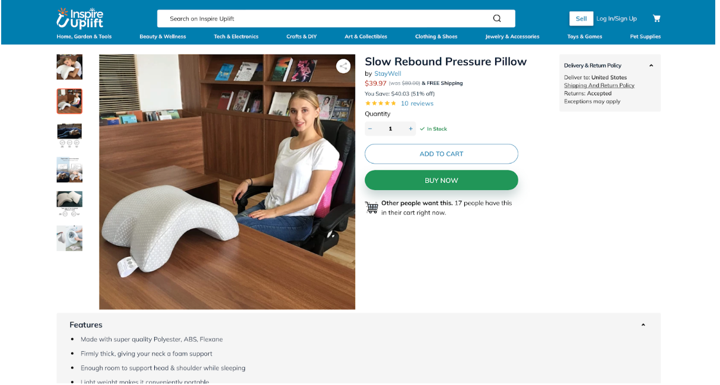
Almost like a first date.
Everybody wants to portray their best side on that first date to make sure they progress down the funnel to that second date, third, etc. And there’s a lot of fancy things you can do to make this happen.
Similarly, your landing page is the first interaction (in most cases) your customer might have with your brand, especially if they’re coming from a cold shopping or search campaign.
And in order to ensure this first date goes well, you need to practice conversion rate optimization techniques.
Most eCommerce store owners running Google ads get this wrong entirely because they don’t know how much of an impact this can have on their performance.
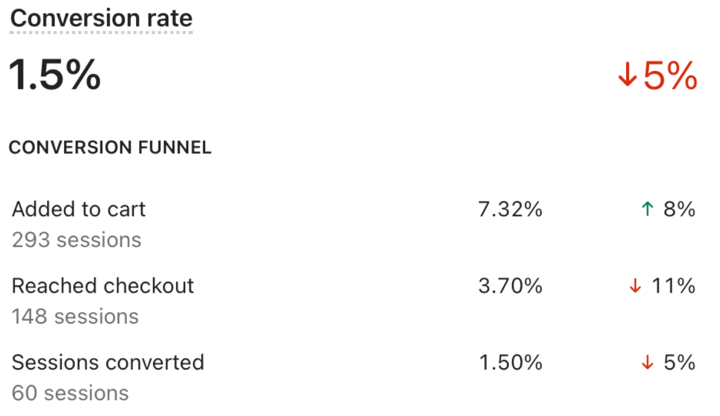
Screenshot from Google ads dashboard
Google ads campaigns run on something called the quality score and one of the main deciding factors of this score is the landing page experience and bounce rate. As a result, it becomes that much more important to practice conversion rate optimization techniques.
Lets start off with the first.
Speed
The pillar of a powerful conversion rate optimization strategy. The pillar that everything else depends on.
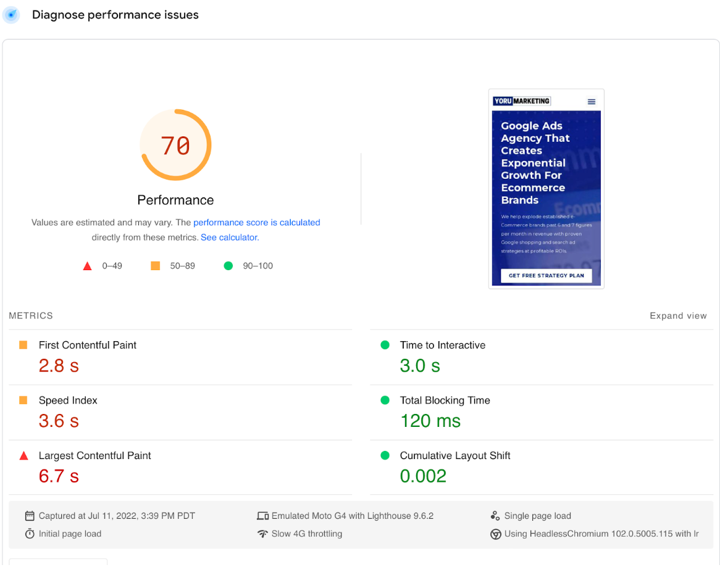
I say this because I’ve had personal experience running eCommerce brands that lacked this pillar. And trust me – the results were far from desirable.
In the recent time periods, consumers have started expecting everything in a matter of seconds. Long gone are the days when the average delivery time would be 7 to 14 business days.
Amazon has created a new attention time span limit for customers with their same business day deliveries. Simply put, nobody wants to wait anymore.
When people aren’t fine waiting, why should your landing page cause them to wait?
An ideal landing page has a load speed of 3 seconds or less and this is the benchmark all my eCommerce brands follow. Anything above that and things get a bit scary.
Take a look at this eCommerce brand. A brand with a speed that’s closer to 3 seconds.

Screenshot from Google ads dashboard
And now look at this eCommerce brand, with a speed that’s about 11 seconds.

Screenshot from Google ads dashboard
The conversion rate here is actually a third of the 1.79% because this brand has another major issue - improper Google Analytics tracking. This makes the real conversion rate a whopping 0.59%.
Absolutely horrendous.
But sales suffer as well due to this. The second brand has done a third of those sales as well and trust me when I say that it’s not entirely profitable.
So do what you need to but ensure load speed is close to or below 3 seconds.
This metric is what the next few metrics and overall success with Google ads will depend on.
Layout
On its own, layout is a topic that I could write a whole new blog post on. But let's keep things simple and analyze the fundamentals.
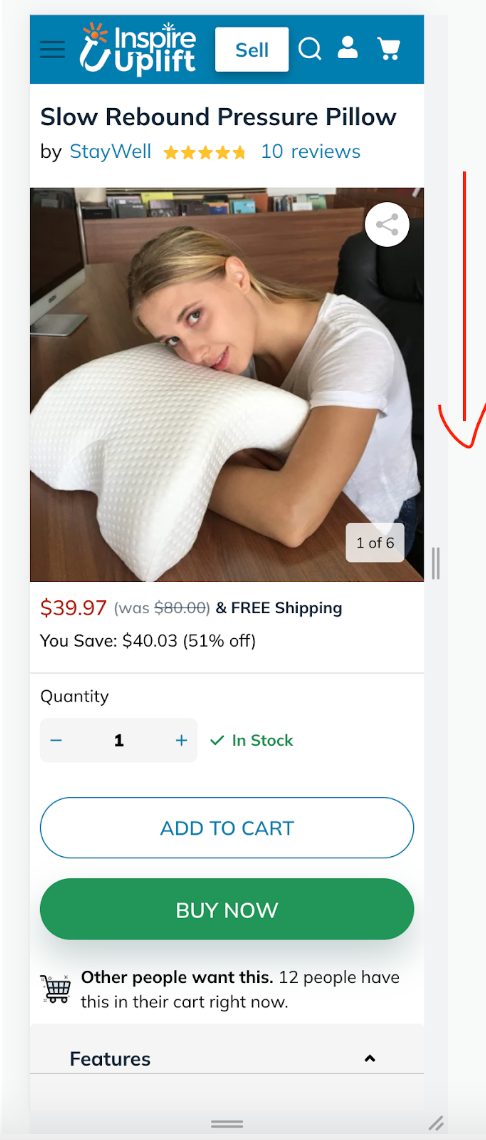
A proper layout is what determines whether the customer drops off at the product landing page or continues down the funnel. It’s super important to get this part right.
There are many ways you can layout your landing page but ensure it matches these things:
- The product related information is above the fold (right when somebody lands on the page)
- Call to actions are visible right at the top
- There are no distractions on the page that take someone elsewhere
- No distracting popups that make the next step difficult
While there are many nitty gritty details, these are the fundamental ones you absolutely need to follow for higher conversion rates.
When a customer is able to easily interact with all the things here, their life becomes extremely easy. As a result, they reward you with even more sales.
Learn to get on the customer’s side instead of using techniques which you think can benefit the experience. Understand what they want and prefer.
But no layout is complete without ideal trust factors.
Trust Factors
Having an ideal conversion rate boils down to the amount of trust you make your customer have in you. It’s also based on the amount of value your landing page oozes.
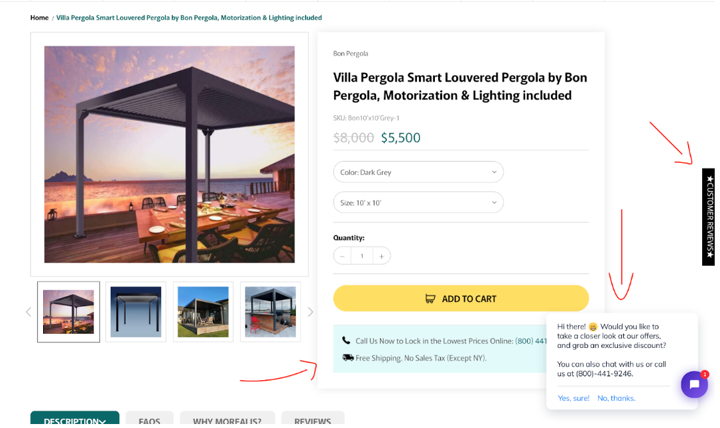
How will your product benefit the customer? Make them feel? Cause their life to become easier?
One easy way to naturally introduce all these things and more within your landing page is by inserting certain trust factors.
Some of the best trust factors I’ve seen work best include:
- Trust badges
- Review badges by trusted websites (Trustpilot)
- Customer reviews
- Customer service information
- Return info / policy
While there are many more factors that could help increase the overall trust an average customer has in you, these are the main ones you get right.
Lets discuss each one briefly.
When it comes to trust badges, you need to ensure you aren’t getting one off Google Images. Spend just a little bit of your budget to have one created that’s custom and matches your website.
The Trust Pilot review badge is a great example of something that’s custom; provided to you by a reputable website. It can also be any other website you collect reviews from.
The next important factor, customer reviews, is pretty straightforward. Ensure your reviews are real and filled with images and text.
Top that off with some customer service and return information right on the product page and your customers will be throwing their wallets at you.
But lets take a look at one of the most important factors that not only determines success with Google ads, but with eCommerce in general: images.
Images
Your images should stand out in every possible way to make sure they’re as optimized as possible for Google ads. However, they can also be used for CRO.
Think of the image as the entry into your product’s lifecycle.
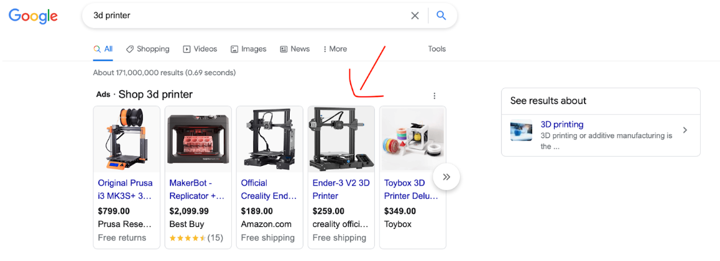
Screenshot from Google
Every product has a lifecycle and this is determined not by the product mage on the landing page itself, but with the image they see on the ad during their first interaction.
This makes having the right image that much more important.
An image that’s properly optimized for conversions is one that stands out of the crowd from the pool of competitors.
It’s also one that’s extremely professional and showcases the main selling product as the biggest part of the frame.
Here, the image is the connecting factor between conversion rate optimization techniques and the results you get with Google ads. Always ensure more time is spent on it.
And this brings us to reviews.
Reviews
I briefly mentioned reviews earlier but this is one part of eCommerce that deserves its own major section.
Reviews are literally the FIRST thing majority of shoppers look at. And for good reason.
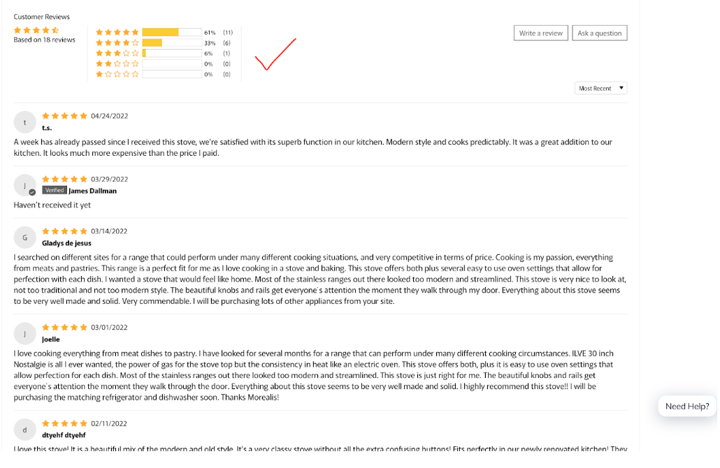
If done correctly, reviews introduce your brand and the product to the customer well before they actually get a hold of it.
Or use it.
But real success of the reviews section starts from the layout itself.
You want to ensure that the reviews are not only clearly visible at the bottom but are also accessible based on the rating.
Plus, what I’ve seen work the best for eCommerce brands is a reviews section with a multitude of different star ratings; five stars all the way down to one.
Not only does this show a wide variety of different experiences and opinions customers might have had, but it also lets the customer know that you’re not afraid to expose your weaknesses. To show your downfalls.
Simply put, it’s too unrealistic to have all five star reviews and customers know this.
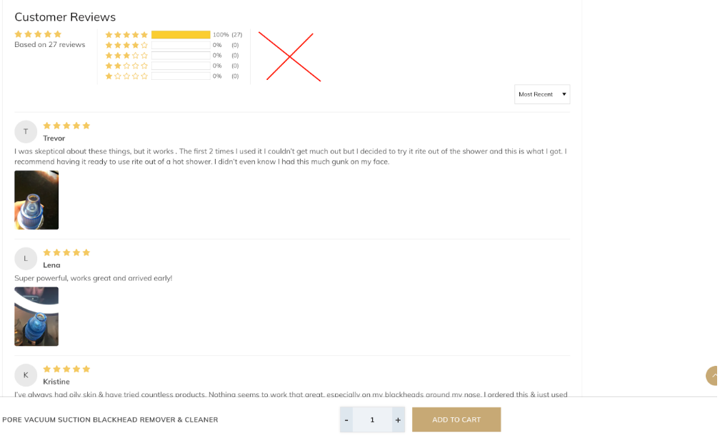
Use the reviews section to your advantage, not against you.
Lets make our way to CRO techniques that happen in the backend.
Following Up
I’ve not worked with one successful eCommerce brand that has not had a decent amount of revenue and lost Google ads sales come from the backend.
It’s simply an integral part of eCommerce and the earlier you implement proper CRO techniques in the backend, the better.
Simple things like optimizing the email template you use for the automated flows or the general format of the SMS remarketing message you send can cause a big impact in sales.

Screenshot from Google ads dashboard
One thing most eCommerce store owners fail to realize is that CRO in the backend is pretty much a never ending process.
All changes that are made should be entirely based on the data the account is getting.
Aside from the actual email template, conversion rate optimization can also be done on things like the email subject, call to action, or the images within.
Just like with any CRO strategy, it’s important to do each one at a time until a winner is identified. Once that’s done, a new layout or strategy can be implemented.
But this brings me to the final CRO technique that can increase sales. To cover that, we’ll need to go a bit deeper into the landing page journey.
Checkout Process
A customer has just landed on your landing page after searching for a product they’ve been wanting.
Everything seems good and they’re ready, with credit card in hand, to take the next step.
They click “Add to cart” to move onto the cart page and then onto the checkout page and it happens..
Almost unexpectedly.
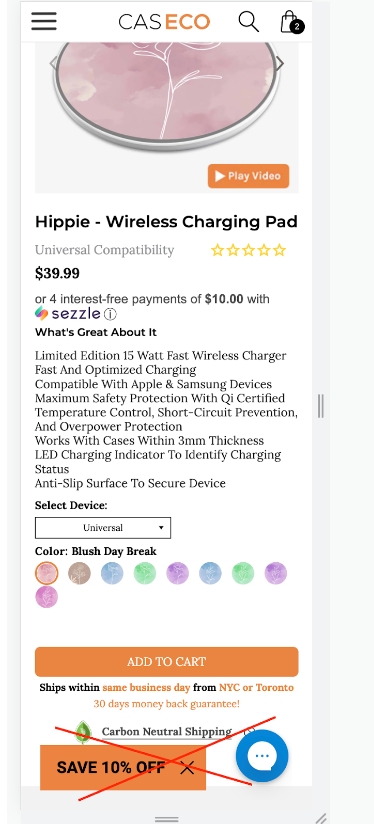
The customer is bombarded with a bunch of upsell offers and pop ups they never asked for and aside from being extremely irritating, they end up slowing the customer’s website and funnel journey.
Frustrated, the customer exits without purchasing a single thing.
And while that may seem overexaggerated, it’s often the case for majority of eCommerce brands.
A properly optimized checkout process that increases sales with the Google ads traffic is one that makes the entire process seamless.
The best strategy to make this part of the funnel easy is to have it be simple and short. Without any extra fancy pages or parts.

Some things that have worked well for some of the eCommerce brands we work with include a one page checkout design.
The main thing you should always do is test different things. Find out what works and what doesn’t based on your experience.
Because ultimately, every customer is different and every audience is different. Only proper tests will help you find that perfect CRO strategy that really pushes your Google ads sales on.
Closing Thoughts
We’ve covered a lot today.
And while you might not implement every single one of these tactics to improve sales, it’s important to try out a few and determine success from those.
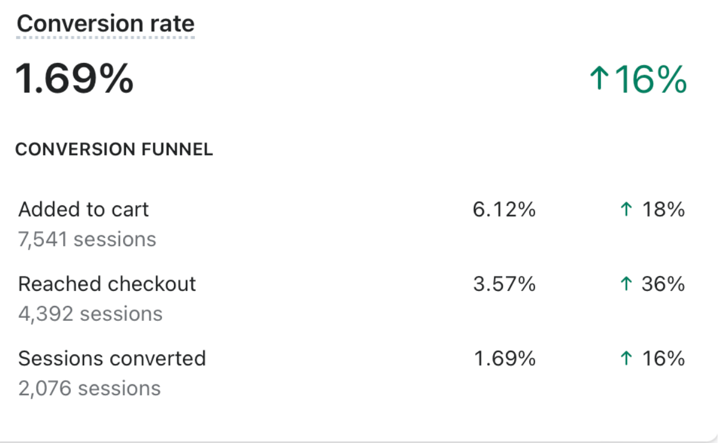
Screenshot from Google ads dashboard
Conversion rate optimization is an integral part of getting consistent sales and it should be a part of the overall strategy for long term success.
